Taking pictures at a Muslim wedding could be a tricky thing. Not like the traditional Indian weddings that could take hours, the Muslim wedding itself takes only a minute as the couple sign the Nikahnama separately, and that’s it! By the time I finished photographing the bride, the bridegroom had already singed the Nikahnama in another part of the house, and the wedding was done. One could think that there would be nothing to photograph, but let me tell you, this was a wedding to remember.
A HYDERABADI MUSLIM WEDDING IN DELHI
The couple met through mutual friends while Aashti was visiting Delhi on holiday, being based in Washington DC at the time. He asked for her phone number and subsequently they went on their first date. The rest, as they say, is history. He proposed to her the next day, and she, of course, accepted. She then went back to Washington, quit her job, packed up her stuff and moved back to Delhi. She had been gone thirteen years but moved back in four months.
Their wedding was “a bit of a traditional mish-mash”, as Aashti describes it. Zahid’s family is a traditional Muslim family from Hyderabad and the former princely state of Palanpur, and Aashti’s is from U.P. and Kashmir. There were many rituals that were shared in common but some that were more unique to one side or the other. Here are a few images of this fantastic Muslim wedding in Delhi.
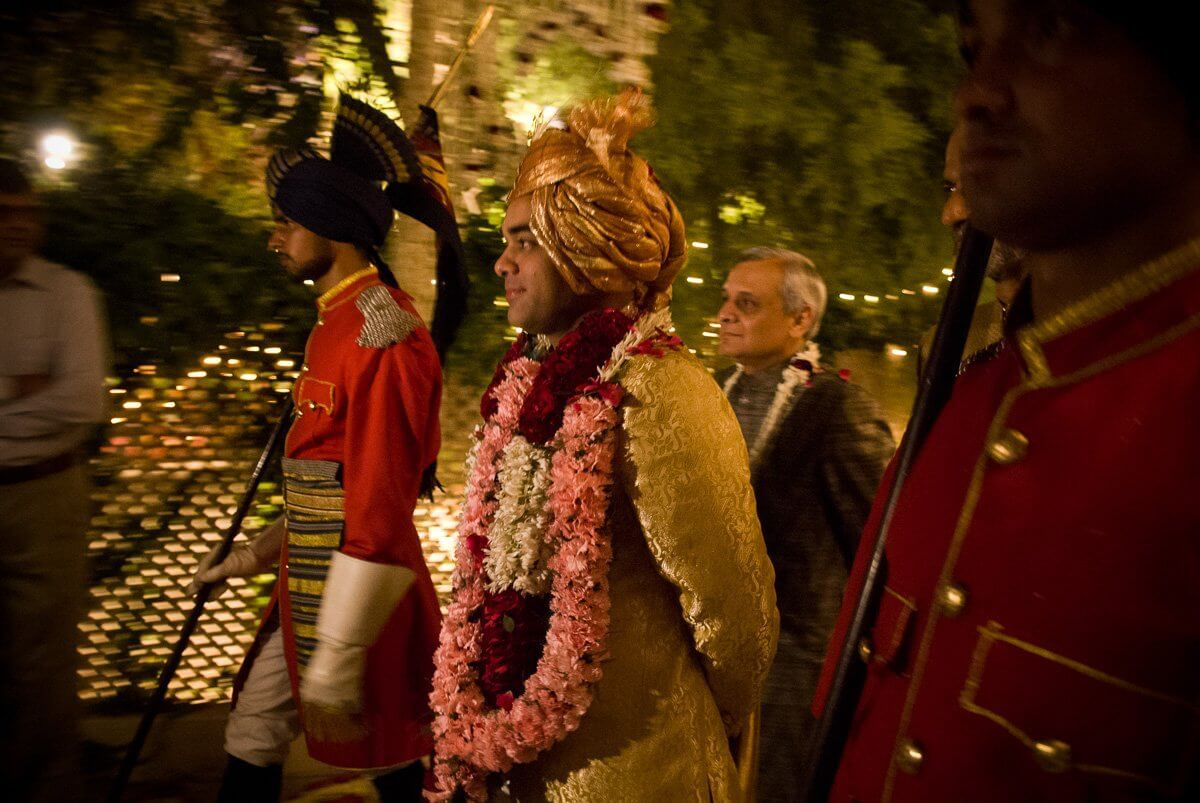
The groom arrives at the wedding venue with his baraat (wedding procession). A band of musicians announce their arrival. He is wearing a Sherwani, the traditional men’s garb of Hyderabad. It is a coat-like tunic with a tight-fitting collar (fastened with hooks), close-fitting in the upper torso and flaring somewhat in its lower half. It usually has six or seven buttons, often removable ones made from clone panerai manifattura luminor gold sovereigns for special occasions. The material is usually silk or wool. A groom may use gold brocade for his wedding sherwani, but otherwise good taste dictates understated colors, albeit with rich and textured fabrics. The sherwani is usually worn over a silk or cotton kurta (long shirt) and pyjamas (baggy pants with a drawstring at the waist).
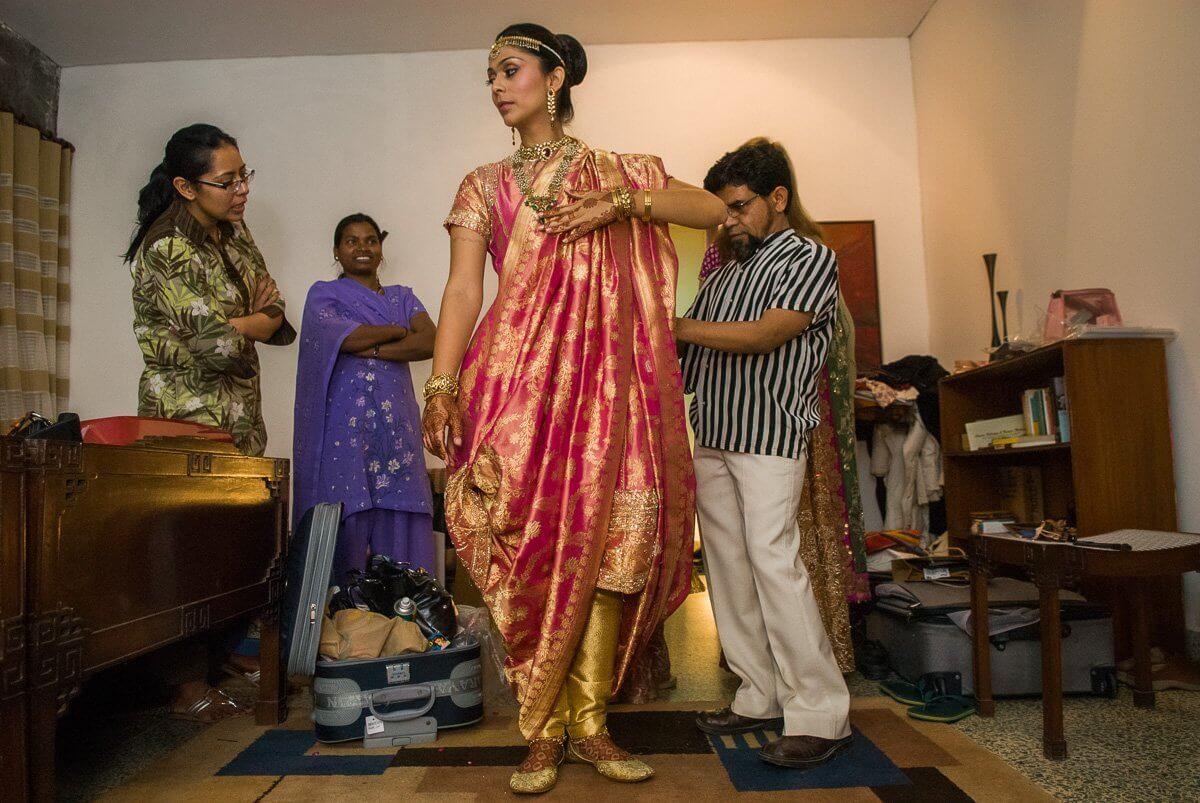
The Muslim bride is wearing a traditional Hyderabadi outfit known as the Khada Dupatta (standing veil. It is an outfit composed of a kurta (tunic), chooridaar (ruched pair of pants), and 6 yard dupatta (veil) and is traditionally worn by Hyderabad brides. The necklace, earrings, and thick bracelet on the bride’s wrist are from her mother in law’s great great grandfather, Nawab Mohammed Zorawar Khan of Palanpur, and are about 200 years old.
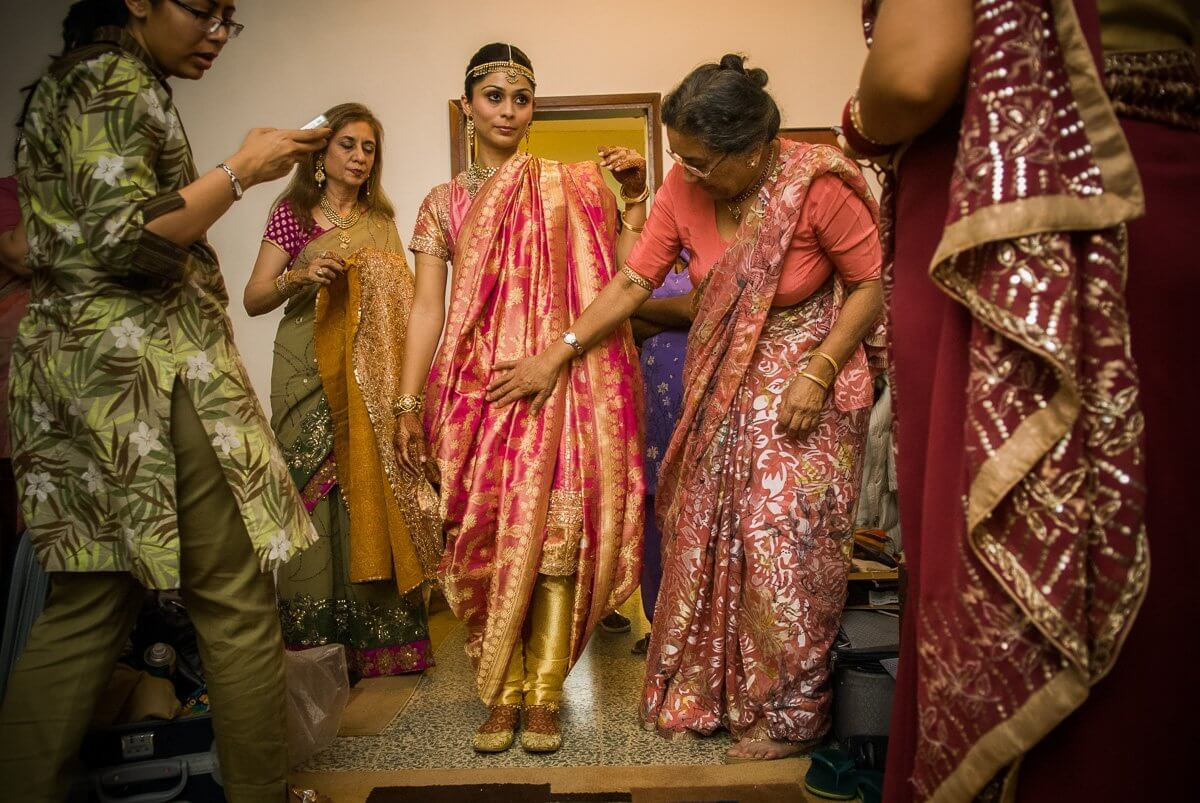
While the Khada Dupatta was new, it was specially woven in Benares and was in pure gold thread. The design of the fabric was inspired by the Dupatta that was worn by the groom’s great grandmother on her wedding day. The brides outfit is accompanied by traditional jewellery, one of which is a Tika, a medallion of uncut diamonds worn on the forehead and suspended by a string of pearls.
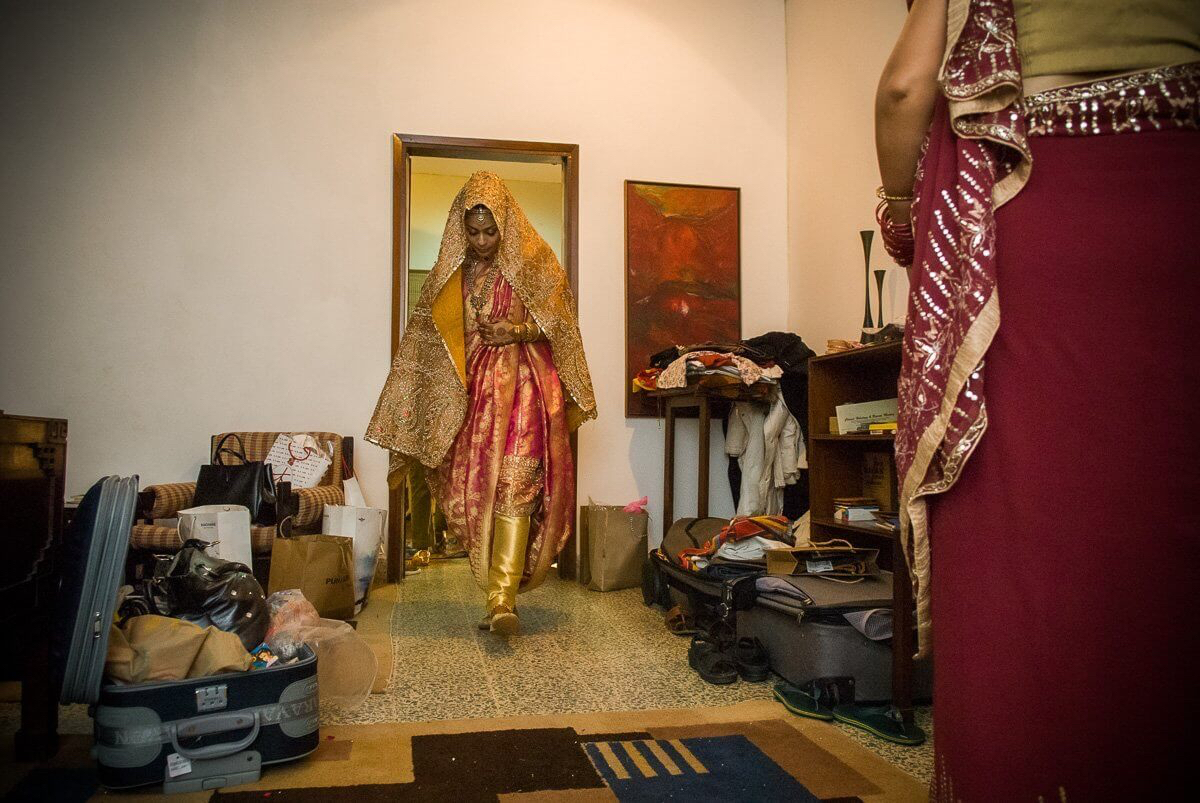
Covering the head during a wedding is a mark of respect. The ghunghat, which is equivalent to the veil of the Christian bride, is worn by the bride. It may vary in length, covering not only the head but the shoulders, back and almost down to the waistline. This specific ghoonghat was handmade by the groom’s great grandmother and is over a 100 years old.
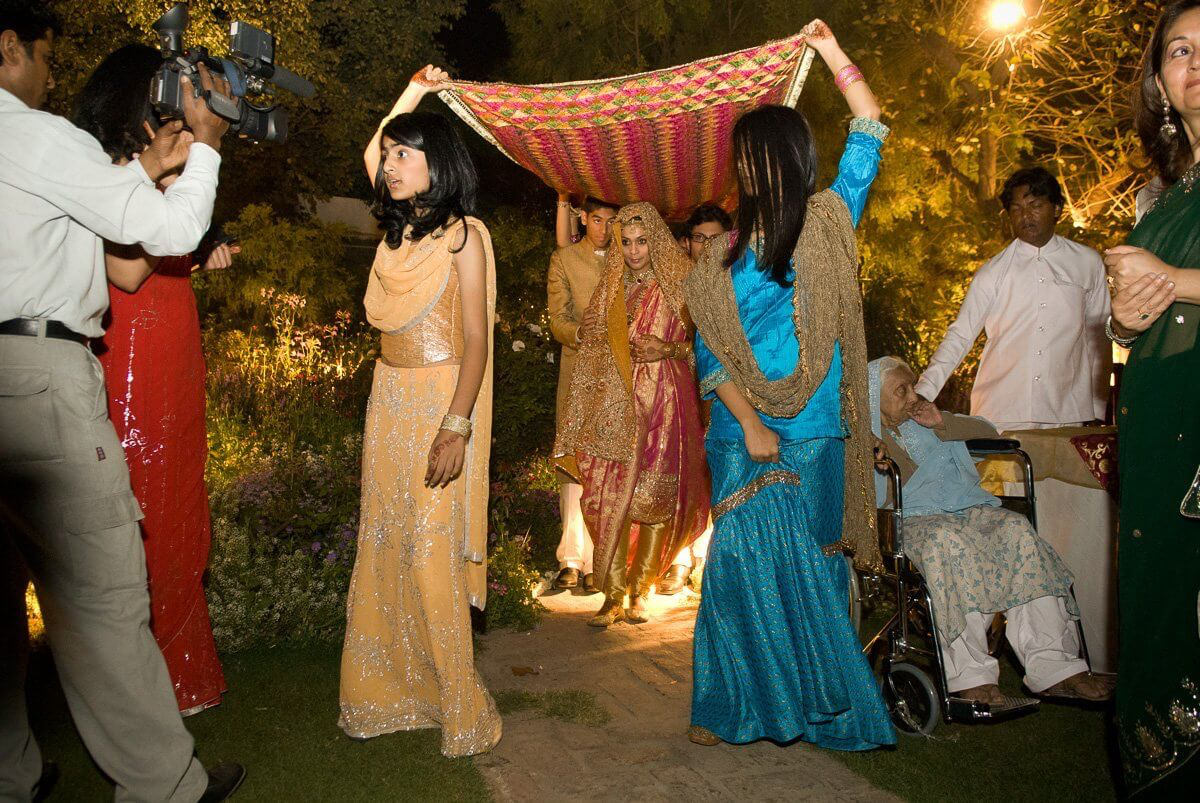
The bride’s sisters and brothers hold the sides of the cover over her head as she makes her first entrance.
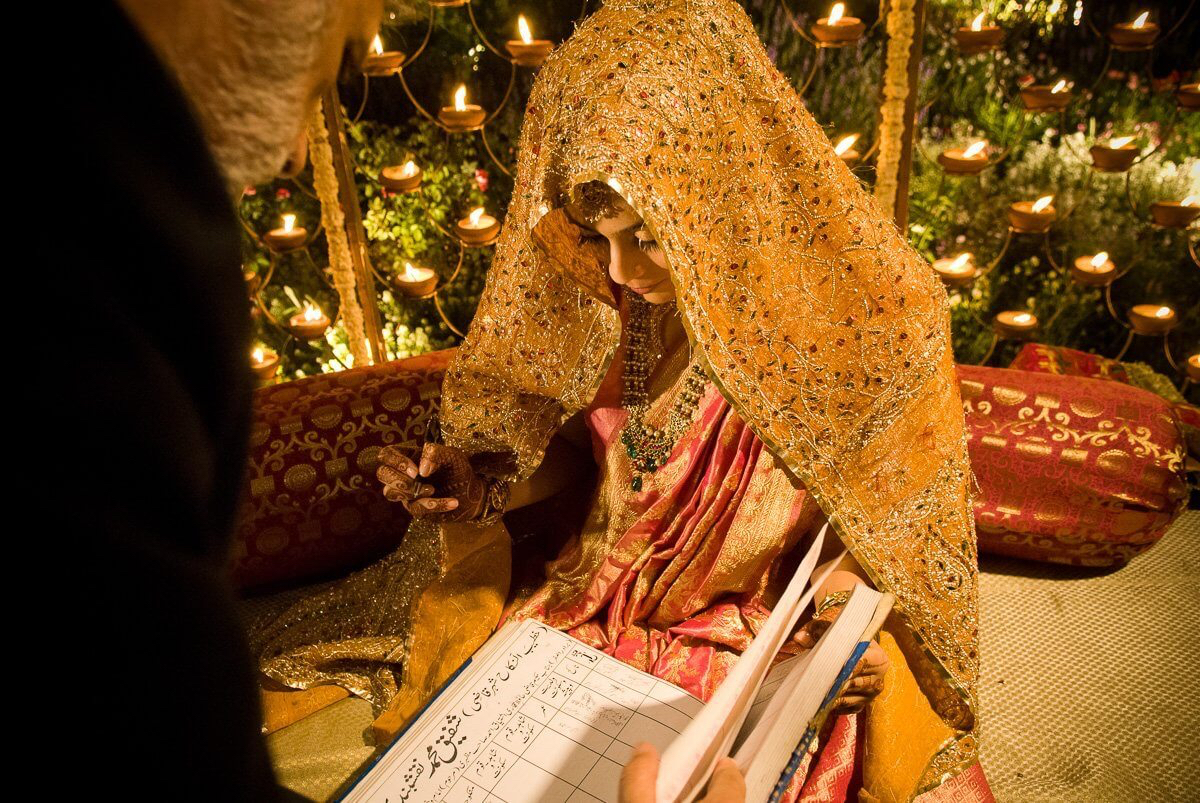
A Maulvi (priest) in the presence of close family members and relatives conducts the Nikah (Muslim wedding ceremony). The bride and groom sign the Nikahnama separately and then the couple are pronounced married. The ‘Walis’ (the father of the bride and of the bridegroom) play an important role in the ceremony. As a father, each must ensure that the rights of his child are protected. The Maulvi reads selected verses from the Quran, the holy book of the Muslims. The Nikaah is complete after thIjab-e-Qubul. (proposal and acceptance). Usually, the boy’s side proposes and the girl’s side conveys her assent. The mutual consent of the bride and groom is of great importance for the marriage to be legal. Neither of them must be forced to enter into the marital contract. The Nikaahnaama, the document in which the marriage contract is registered, contains a set of terms and conditions that must be respected by both the parties. It also gives the bride the right to divorce her husband.
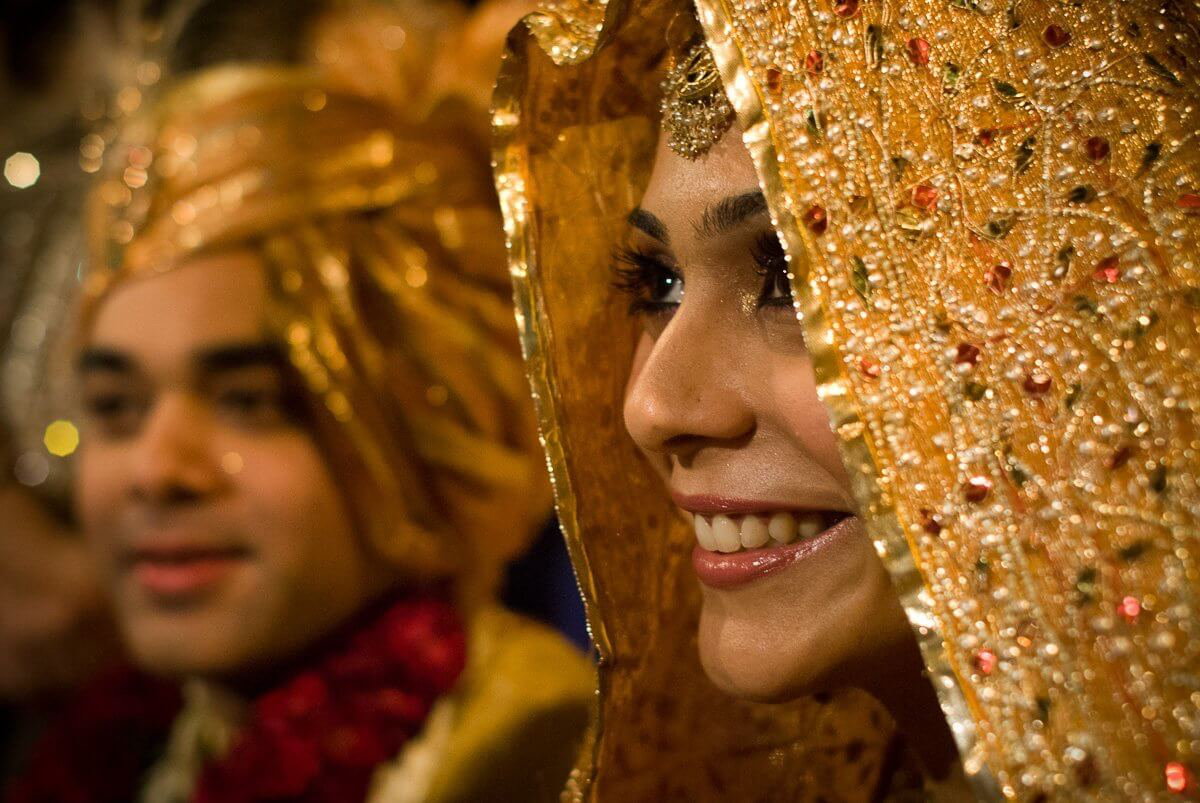
The groom receives blessings from the older women and offers them his salaam (a respectful salutation). The guests pray for the newly-weds.
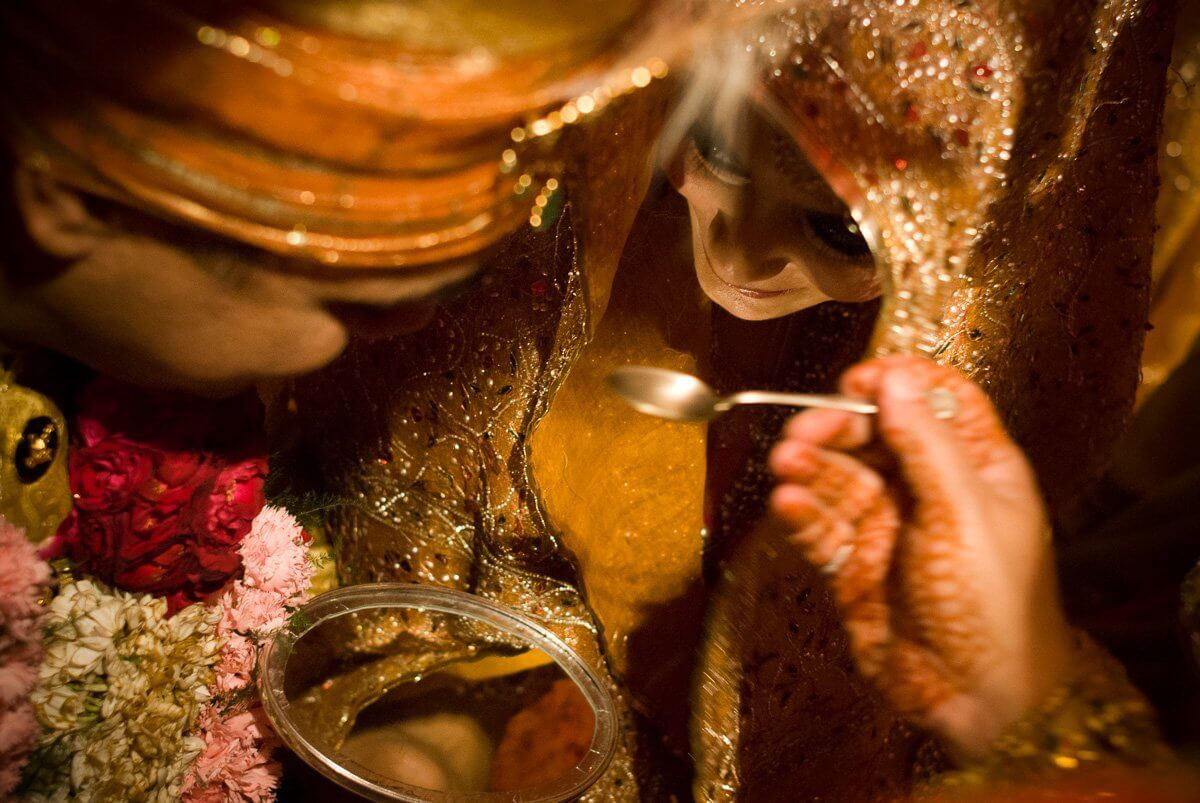
The “Arsi Musaf” is a Muslim wedding ritual and is performed after the signing of the Nikah and before the time of departure (Rukhsati). A veil is placed over the bride and groom’s head and a mirror is placed on their laps. Traditionally, this would be the first time the groom would see the brides face in the reflection of the mirror and vice versa. They drink sweetened water from the same spoon to signify that they are indeed betrothed. “It is a very tender and sweet ritual as the bride and groom have a moment to themselves” says Aashti.
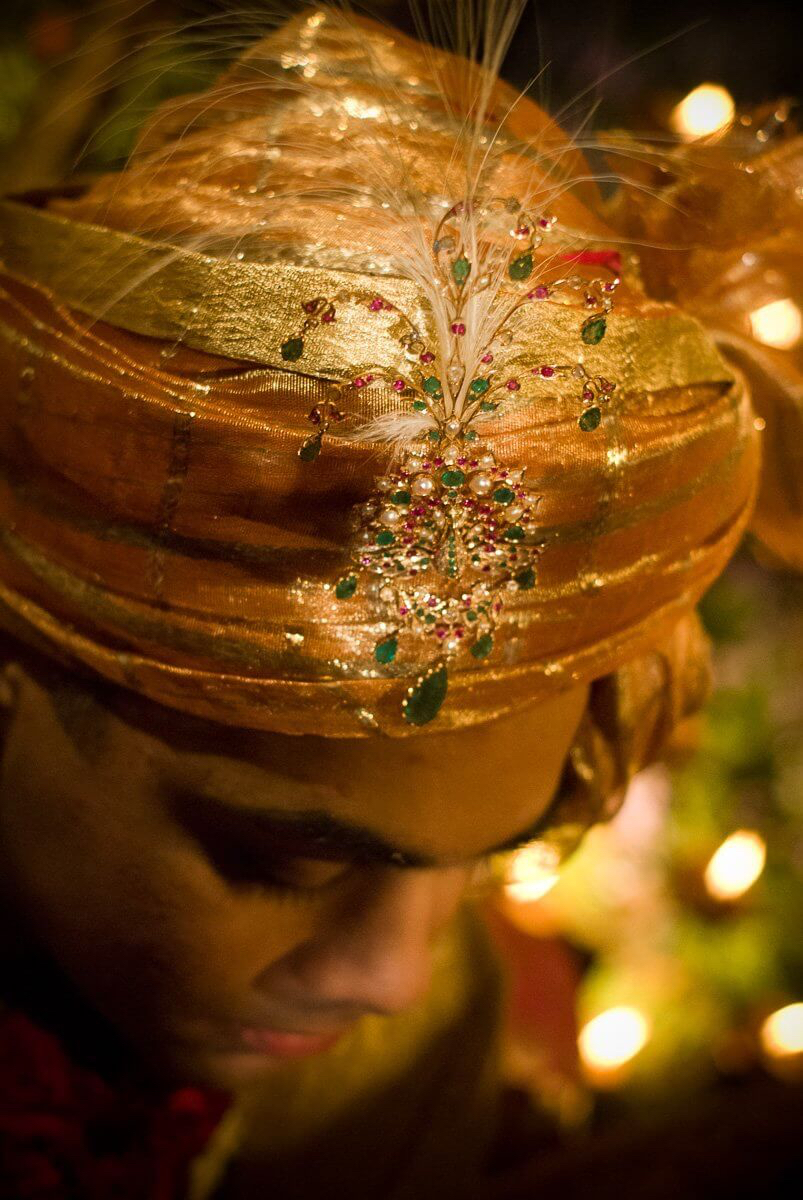
The bridegroom’s Safa (turban) and Sarpech (headpiece) belonged to his great, great, great grandfather, while his sherwani was inspired by his own father’s wedding shervani. It was also woven in pure gold thread in Benares.
Sephi Bergerson is a documentary wedding photography based in India since 2002 and is available for Muslim wedding photography assignments in Delhi, Kerala and all over India, south east Asia and Africa.